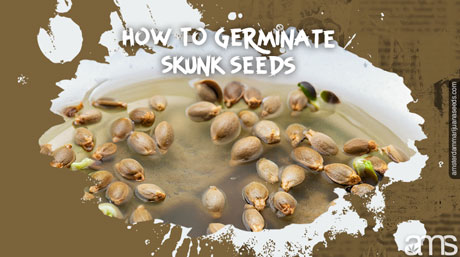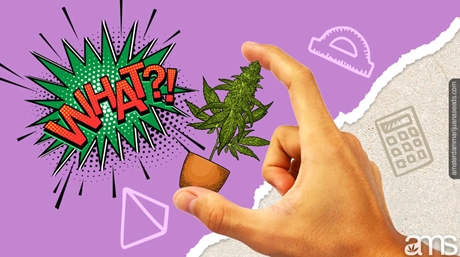Germinating marks the onset of life for a seed, and when it comes to growing marijuana plants, it’s the all-important first step. Imagine this: the seed sprouts, and a tiny, delicate white root peeps out from its shell, marking the birth of your cannabis plant. Intriguing, isn’t it? Let’s delve further into this remarkable phenomenon.

A seed, to metamorphose into a plant, requires specific conditions. Primarily, it needs water to kickstart the ‘imbibition’ process. Imbibition is a fundamental phase wherein the seed absorbs water from its surroundings, leading to an internal buildup of pressure. This pressure eventually causes the seed shell to crack open, allowing the embryonic plant to emerge. The absorbed water also triggers increased metabolic activities within the seed, supplying the necessary energy for growth. Thus, water forms the crux of this incredible natural process.
Simultaneously, air plays a critical role in seed germination. The availability of air permits the young seedling to perform photosynthesis and transpiration. Photosynthesis is the process of converting light energy into chemical energy in the form of glucose, a crucial nutrient for the plant. On the other hand, transpiration is the process through which the plant loses water vapor from the stomata (tiny openings) in its leaves. This loss helps transport nutrients from the roots to the rest of the plant, and also cools the plant down.
Moreover, warmth is the third vital ingredient for germinating cannabis seeds. Warm temperatures instigate seed germination, and young seedlings flourish when the surrounding humidity is relatively high. Think of springtime: rising temperatures, abundant rain, and extended hours of sunlight. The seeds, sensing these environmental changes, begin to germinate.
Once the seeds have all the prerequisites for germination, you’ll notice a tiny white root emerging. This root, often referred to as the ‘taproot’, serves as the origin of your cannabis plant’s root system. As the taproot extends, it lifts the seed through your chosen growing medium, and the first leaves, known as cotyledons, peek out.
Cotyledons, though visible only after a while, were already formed inside the seed’s embryo. The seed shell might still cling to the cotyledons, but it’s essential to let nature take its course rather than intervening manually, as you might inadvertently damage the fragile plant.
Now that we’ve covered the basics, let’s discuss some popular germinating methods. One such method is the ‘paper towel’ technique. This involves placing your marijuana seeds between two damp paper towels on a plate. For added security and humidity, cover the seeds with a bowl, creating a mini greenhouse. Ideally, place them in a location where the temperature remains consistent for a few days.
If you’ve tried and tested various germination methods without success, you might consider using a germination booster. This nifty tool will ensure your seeds sprout within 3 to 4 days.
It’s essential to monitor the seeds daily to prevent them from drying out, which could hamper growth or cause damage. Once you observe the taproot’s development, you can carefully transfer the seedlings into your growing medium. Avoid touching the roots directly, as they are extremely fragile. Using tweezers for this process can ensure a safer transfer.
When transferring the germinated seeds, remember to position the white root downwards. Seeds planted with the root facing up take more time to adjust and sprout from the growing medium.
For those who’d rather skip the transplant process, there’s an option to directly sow the seeds into your growing medium. This method eliminates the risk of ‘transplant shock’—a condition that can occur when a plant is moved to a new environment.
If you prefer direct sowing, the procedure is fairly straightforward. Plant each seed in a separate pot filled with moist soil. However, be cautious about the soil type; choose a light one with moderate nutrients to prevent ‘nutrient burn’ in your seedling.
The seed should be planted about a knuckle deep—no more than ½ an inch. After planting, cover the seed lightly with soil and avoid overwatering. To maintain humidity, cover the pots with clear plastic wrap and keep them in a warm, well-lit area. Within a few days, you’ll see the cotyledons sprouting from the soil. You can then remove the plastic cover and place the seedlings under a grow lamp.
Congratulations, you’re now a budding botanist! Sit back, relax, and watch your green babies grow. It’s indeed a rewarding experience to behold.
Besides water, warmth, and air, light is another influential factor in seed germination. Light serves two primary functions in this context: it can trigger germination and fuel the process of photosynthesis in young seedlings. Some seeds, such as lettuce and sunflowers, require light for sprouting, while others germinate best in darkness. In the case of cannabis, the seeds do not strictly need light to germinate, but the seedlings require light for healthy growth. Therefore, whether you’re using natural sunlight or artificial grow lights, ensure that the light source is neither too intense nor too weak. A balance of light is crucial to avoid “leggy” seedlings—a term used to describe spindly plants that are stretching to find more light.
During germination, the seed primarily relies on its stored nutrients for growth. However, once the first true leaves appear—these are the leaves that emerge after the cotyledons—the seedling begins to photosynthesize and draw nutrients from the soil. At this stage, it becomes critical to provide your young plants with a nutrient-rich growing medium to ensure their healthy development. Use a light potting mix for the initial stages and then gradually introduce more nutrient-dense soil as the plant matures.
While the information above provides a strong foundation, remember that each seed is unique and may react differently to these conditions. Therefore, successful germination also involves observation and adaptation. Keep a close eye on your seeds and adjust your approach as needed to meet their specific needs.
From a tiny seed to a full-grown plant, the journey of germination is indeed miraculous. As a grower, you get the privilege of witnessing this wonder of nature firsthand. Happy growing!













Related Posts

Germination is the process by which a seed begins to develop into a new plant. It involves activating the dormant seed embryo, enabling it to sprout roots and grow into a full-fledged plant. For skunk marijuana seeds, germination is a crucial step that determines the success of your cultivation journey.
Germination ensures seed viability, unlocks genetic potential, offers control over…

We want to devolve into some fun facts about autoflowers that you may not be aware of yet. As they continue to grow in popularity, we hope this will help you uncover the desire to grow them yourself.

Budapest’s Sports Loving Duo
Atilla and Zsofia’s love story is woven into the cultural fabric of their hometown, Budapest. Their lives are active and full, filled with a balance of work, play, and their little secret horticultural project. Atilla, with his broad shoulders and strong hands, is well known in the local gym and the volleyball court. He’s a plumber…